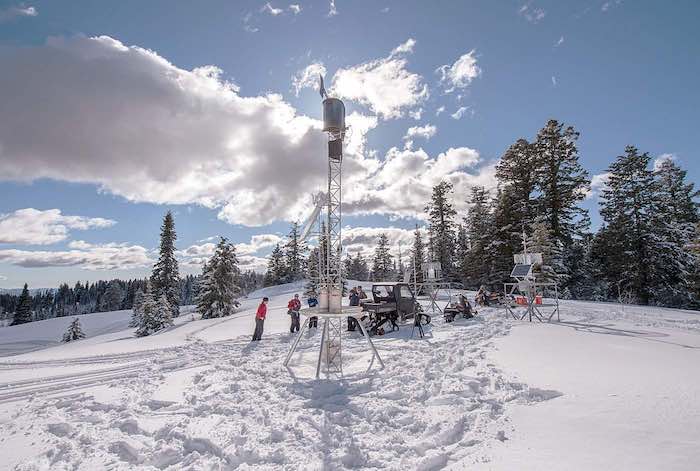forum
library
tutorial
contact

Cloud Seeding, Collaborative Efforts
Can Help Restore Idaho's Salmon Runs
by Ron Abramovich
Idaho Mountain Express, February 2, 2022
|
the film forum library tutorial contact |

|
Cloud Seeding, Collaborative Efforts
by Ron Abramovich
|
The four lower Snake River dams have outlived their life.
 I've always been amazed at what can be accomplished by working together. Now is the time to collaborate with our downstream states to restore the salmon runs in the Snake River basin.
I've always been amazed at what can be accomplished by working together. Now is the time to collaborate with our downstream states to restore the salmon runs in the Snake River basin.
My entire 30 year career as Idaho's Water Supply Specialist included discussions, projects and success stories about recovering salmon and steelhead. Seventeen billion dollars spent over 30 years in the Columbia Basin has prevented these species from going extinct but has not restored them to sustainable numbers.
The coordination and management of the Columbia Basin's water is amazing. I've seen firsthand numerous agencies working together to manage our water supplies. Did you know that Brownlee Dam in Hells Canyon Complex and Dworshak Reservoir provide flood control to cities along the Columbia River in Washington and Oregon, including Portland?
Success stories include Idaho Power's Collaborative Cloud Seeding Program in the middle and upper Snake basins, and Idaho's Managed Recharge Program that diverts excess water into the Eastern Snake River Plain Aquifer to help stabilize groundwater levels.
Much has been learned to master the art of cloud seeding that increases snow water equivalent by 7-15%. Melting of this snow provides an additional million acre-feet of water annually to be put to use. Success of this cloud seeding program is supported by Idaho State Legislature's recent bill to support additional cloud seeding opportunities.
Cloud seeding opportunities in the Salmon and Clearwater basins should be investigated to help irrigators and benefit salmon. Successful cloud seeding to produce more water will allow water managers the ability to better shape the hydrograph for salmon flows. This may reduce the need for some flow augmentation water from upper Snake reservoirs. Cold snowmelt water from the Clearwater River headwaters will keep river temperatures cooler longer and may reduce or delay the need for Dworshak water to cool downstream river temperatures. This may also allow Dworshak water levels to remain full longer in the summer as was promised when the dam was built. The additional snowmelt water would also generate hydropower at Dworshak and the lower Columbia River dams which would help offset power loss from removing the Snake River dams.
The four lower Snake River dams have outlived their life. The dams' primary purpose was to provide an Idaho shipping port and hydropower. These accomplishments came with costs. These dams slowed the Snake River to a crawl in this 140-mile section, creating miles of warm water that drastically impacted Idaho's salmon and steelhead migration to the ocean and back.
Today, we are at critical crossroads because of the low number of fish returning to Idaho. It's time to work together with our downstream neighbors to restore this river section to a free flowing river and explore cloud seeding opportunities that benefit fish, irrigators and power producers.
If you have ever seen these fish in the wild darting under your raft, jumping up Dagger Falls on the Middle Fork Salmon River, or had one tug the end of your line, then you understand the thrill of salmon in the wild.
learn more on topics covered in the film
see the video
read the script
learn the songs
discussion forum
